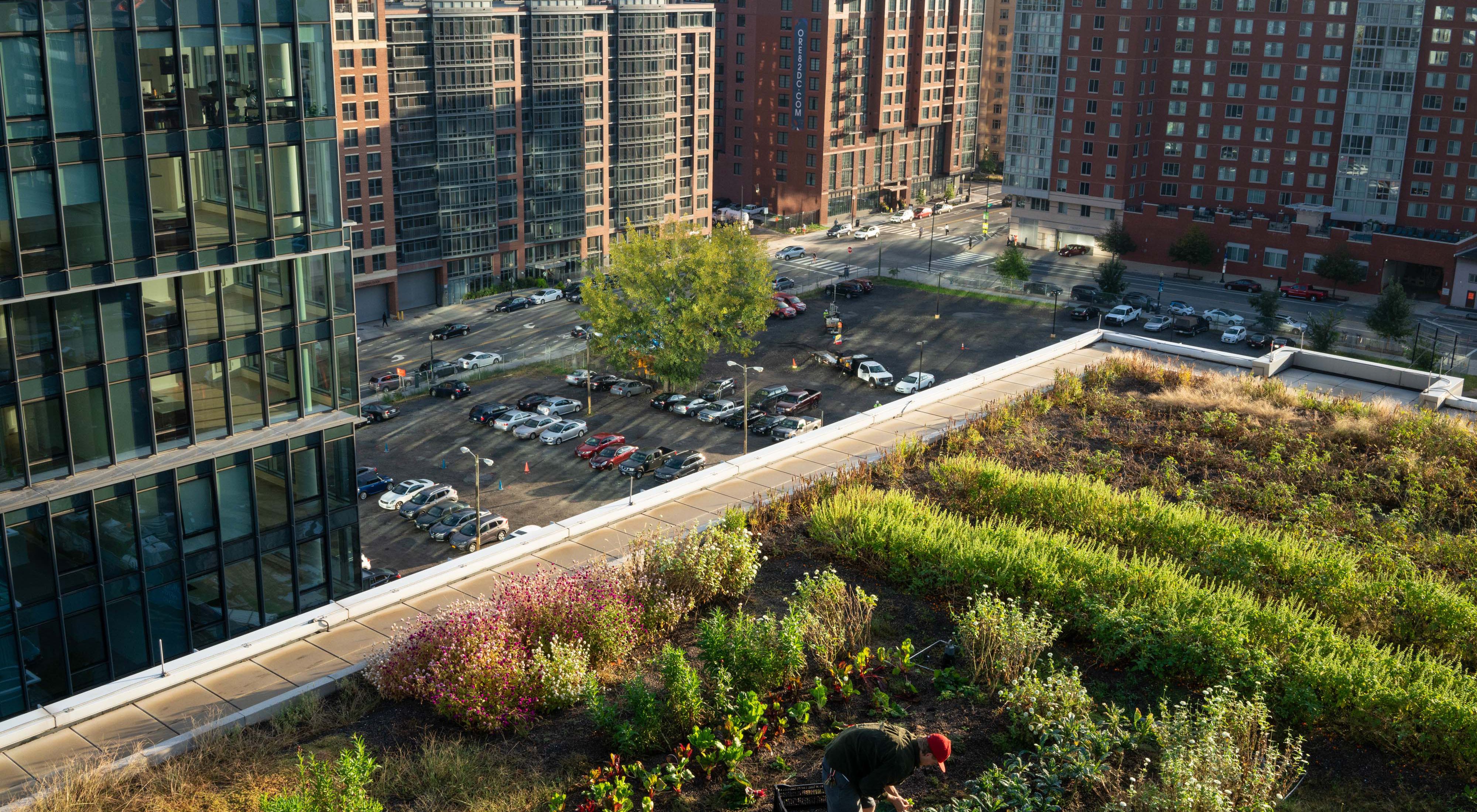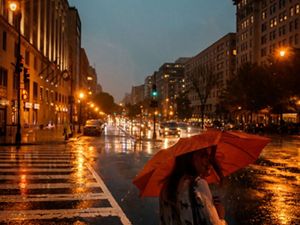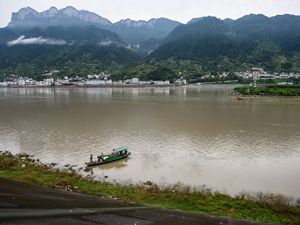Stormwater Solutions: Investing in Nature and Communities
By Pascal Mittermaier, Former Global Managing Director, Cities
I am thrilled about an innovative new strategy to protect urban water quality that combines conservation science, a new financial tool and the power of community in our cities.
But to understand, first you need to picture rain falling gently on Washington, D.C.
It lands with a splash on the White House, runs down the dome of the Capitol Building, beats on the roofs of cars caught in traffic downtown. Water gushes down gutters and pools along curbs. Hundreds of puddles form along streets and the rain keeps falling.
In fact, an average 1.2-inch rainstorm in Washington, D.C. creates nearly 800 Olympic-sized swimming pools full of water, millions of gallons of water flowing at a high velocity down our city streets, into the Potomac and Anacostia rivers, and ultimately into the Chesapeake Bay. Fresh, life-giving water, right?
Not quite. My colleague Kahlil Kettering, urban conservation director for the Nature Conservancy in Washington, D.C., explains it this way: Think about how a fresh snowfall begins to look after two or three days – it turns brown, splashed with mud, dog urine, soot and oil from passing cars and fertilizers and pesticides from lawns. Imagine a fish swimming in that mess. Imagine that pollution floating in the water that you drink.
Quote: - Kahlil Kettering
We want to fund projects that increase the health of the environment, benefiting local communities as well as create financial assets.
When polluted stormwater makes its way into urban waterways, that’s exactly what happens.
And a third of the city’s storm sewers, which carry this runoff, are combined with the sanitary sewer system — creating the additional challenge of overtaxing water treatment systems.
“You see what’s happened to the Anacostia River, and the people living along the river are directly affected by pollution,” Kettering says. “Every year, 17,000 people fish in the Anacostia River. You know their families are eating that fish.”
Urban stormwater is a major contributor of water pollution in the Chesapeake Bay, the biggest estuary in the United States, with a watershed that’s home to 17 million people.
Stormwater is second only to agricultural runoff, and growing at a much faster rate, Kettering says. Meanwhile, the city leaders are facing ever-increasing pressures on their budget and hundreds of miles of sewer pipes – many of which are more than a century old – that will cost billions of dollars to update.

Nature-based solutions
Natural solutions like rain gardens and wetlands on public and private land across the city help to absorb stormwater and prevent runoff from entering our rivers. To solve this problem, Washington, D.C. joined cities like Seattle, Oklahoma City and Fort Worth, Texas, to implement a stormwater fee that charges landowners based on a formula that calculates how much runoff they create, which funds city projects to build natural solutions. However, by installing natural solutions on their property landowners can reduce their fees and help improve the environmental health of the city.
The fees for some landowners can run into several hundred thousands of dollars annually, offering an incentive for property owners who invest in natural infrastructure and see a reduction in their fees.
That’s where the Nature Conservancy comes in. Kettering and his colleagues in other U.S. cities are working with community leaders to provide opportunities for local landowners to develop green stormwater solutions for economic and ecological benefit.
Earlier this month, we were proud to be a part of launching a first-of-its kind partnership that will support a stormwater retention credit market, creating new funding mechanisms for projects that reduce both runoff and the resultant stormwater fees across the community.
The credit trading system allows conservation groups like the Nature Conservancy to direct payments from landowners to fund critical conservation projects in vulnerable neighborhoods where the impacts of pollution are felt more strongly.
“Not every drop of stormwater is created equal – that’s why we’re targeting projects in the places where they’ll have the most benefit for clean water,” Kettering says.
And stormwater retention projects can provide a wealth of other environmental and community benefits, including habitat for native species, trees that reduce city heat and help clean the air and green space for people who live in the neighborhood.
For example, installing rain gardens to collect and filter rainfall in a church parking lot could keep the river clean and provide an important financial boost to a pillar of the community.
“We want to fund projects that increase the health of the environment, benefiting local communities as well as create financial assets,” Kettering says.
Originally Posted on Triple Pundit
April 06, 2016
View Original
Global Insights
Check out our latest thinking and real-world solutions to some of the most complex challenges facing people and the planet today.


